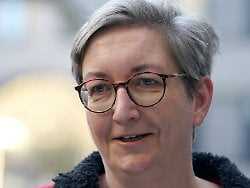Wednesday January 12, 2022
Even the Kohl era had more
Fewer East Germans in the federal government
There is constant argument about the representation of East Germans in top political positions. This will continue in the traffic light coalition, because their share is falling rather than rising.
According to a new study, top officials from East Germany are still extremely rare in federal ministries. There are actually fewer East Germans at the cabinet table than in previous federal governments. This emerges from an analysis by the University of Kassel. According to its own information, it has systematically evaluated almost 3,600 career biographies from the imperial era to today’s Germany and also examined the representation of East Germans in top positions. The researchers differentiate between government members (political elite) and top officials in ministries (administrative elite).
In the “political elite”, the share of East Germans is currently around nine percent: the ministers Klara Geywitz and Steffi Lemke as well as Minister of State Reem Alabali-Radovan, Carsten Schneider and Parliamentary State Secretary Michael Kellner. The value is lower than in most of the previous governments after 1990. As the study author Sylvia Veit reported, between 1990 and 1998 it was more than 15 percent in the Helmut Kohl cabinet. During the term of office of Chancellor Angela Merkel until 2017, the number fluctuated between 8.5 and 13.2 percent.
In the “administrative elite” of top officials such as department heads or state secretaries, the percentage of East Germans until the end of Merkel’s third term of office was for the most part only around one percent. Even under the new traffic light coalition, there is only one State Secretary who grew up in eastern Germany: Antje Draheim in the Federal Ministry of Health.
